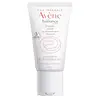What's inside
What's inside
 Key Ingredients
Key Ingredients

No key ingredients
 Benefits
Benefits

 Concerns
Concerns

No concerns
 Ingredients Side-by-side
Ingredients Side-by-side

Water
Skin ConditioningSqualane
EmollientGlycerin
HumectantButylene Glycol
HumectantBis-Diglyceryl Polyacyladipate-2
EmollientLimnanthes Alba Seed Oil
Skin ConditioningCaprylic/Capric Triglyceride
MaskingC12-15 Alkyl Benzoate
AntimicrobialHydrogenated Lecithin
EmulsifyingCrambe Abyssinica Seed Oil
Skin ConditioningOlea Europaea Fruit Oil
MaskingNarcissus Tazetta Bulb Extract
AstringentMyrtus Communis Leaf Extract
PerfumingPolygonum Cuspidatum Root Extract
AntioxidantLaminaria Digitata Extract
Skin ProtectingSigesbeckia Orientalis Extract
Skin ConditioningCentaurium Erythraea Extract
Skin ConditioningTetrahexyldecyl Ascorbate
AntioxidantAcetyl Hexapeptide-8
HumectantTriticum Vulgare Bran Extract
Skin ConditioningCitrus Aurantium Dulcis Peel Oil
MaskingPelargonium Graveolens Flower Oil
MaskingLavandula Angustifolia Oil
MaskingCananga Odorata Flower Oil
MaskingEugenia Caryophyllus Flower Oil
MaskingRosa Centifolia Flower Oil
MaskingJasminum Officinale Extract
MaskingViola Odorata Flower/Leaf Extract
MaskingEugenol
PerfumingLinalool
PerfumingCitronellol
PerfumingCitral
PerfumingLimonene
PerfumingBenzyl Benzoate
AntimicrobialBenzyl Cinnamate
PerfumingGeraniol
PerfumingSucrose
HumectantSalvia Sclarea Extract
AntiseborrhoeicOlea Europaea Fruit Extract
BleachingGlycyrrhiza Glabra Leaf Extract
Skin ConditioningCucumis Sativus Fruit Extract
EmollientPyrus Malus Fruit Extract
Skin ConditioningScutellaria Baicalensis Root Extract
AstringentTheobroma Grandiflorum Seed Butter
Skin ConditioningDipotassium Glycyrrhizate
HumectantCaffeine
Skin ConditioningSodium Hyaluronate
HumectantDimethicone
EmollientXanthan Gum
EmulsifyingTocopheryl Acetate
AntioxidantSorbic Acid
PreservativePhenoxyethanol
PreservativeWater, Squalane, Glycerin, Butylene Glycol, Bis-Diglyceryl Polyacyladipate-2, Limnanthes Alba Seed Oil, Caprylic/Capric Triglyceride, C12-15 Alkyl Benzoate, Hydrogenated Lecithin, Crambe Abyssinica Seed Oil, Olea Europaea Fruit Oil, Narcissus Tazetta Bulb Extract, Myrtus Communis Leaf Extract, Polygonum Cuspidatum Root Extract, Laminaria Digitata Extract, Sigesbeckia Orientalis Extract, Centaurium Erythraea Extract, Tetrahexyldecyl Ascorbate, Acetyl Hexapeptide-8, Triticum Vulgare Bran Extract, Citrus Aurantium Dulcis Peel Oil, Pelargonium Graveolens Flower Oil, Lavandula Angustifolia Oil, Cananga Odorata Flower Oil, Eugenia Caryophyllus Flower Oil, Rosa Centifolia Flower Oil, Jasminum Officinale Extract, Viola Odorata Flower/Leaf Extract, Eugenol, Linalool, Citronellol, Citral, Limonene, Benzyl Benzoate, Benzyl Cinnamate, Geraniol, Sucrose, Salvia Sclarea Extract, Olea Europaea Fruit Extract, Glycyrrhiza Glabra Leaf Extract, Cucumis Sativus Fruit Extract, Pyrus Malus Fruit Extract, Scutellaria Baicalensis Root Extract, Theobroma Grandiflorum Seed Butter, Dipotassium Glycyrrhizate, Caffeine, Sodium Hyaluronate, Dimethicone, Xanthan Gum, Tocopheryl Acetate, Sorbic Acid, Phenoxyethanol
 Reviews
Reviews

Ingredients Explained
These ingredients are found in both products.
Ingredients higher up in an ingredient list are typically present in a larger amount.
This ingredient is an emollient, solvent, and texture enhancer. It is considered a skin-softener by helping the skin prevent moisture loss.
It helps thicken a product's formula and makes it easier to spread by dissolving clumping compounds.
Caprylic Triglyceride is made by combining glycerin with coconut oil, forming a clear liquid.
While there is an assumption Caprylic Triglyceride can clog pores due to it being derived from coconut oil, there is no research supporting this.
Learn more about Caprylic/Capric TriglycerideGlycerin is already naturally found in your skin. It helps moisturize and protect your skin.
A study from 2016 found glycerin to be more effective as a humectant than AHAs and hyaluronic acid.
As a humectant, it helps the skin stay hydrated by pulling moisture to your skin. The low molecular weight of glycerin allows it to pull moisture into the deeper layers of your skin.
Hydrated skin improves your skin barrier; Your skin barrier helps protect against irritants and bacteria.
Glycerin has also been found to have antimicrobial and antiviral properties. Due to these properties, glycerin is often used in wound and burn treatments.
In cosmetics, glycerin is usually derived from plants such as soybean or palm. However, it can also be sourced from animals, such as tallow or animal fat.
This ingredient is organic, colorless, odorless, and non-toxic.
Glycerin is the name for this ingredient in American English. British English uses Glycerol/Glycerine.
Learn more about GlycerinSqualane is an emollient that helps the skin hold onto moisture. It's an oily liquid that occurs naturally in certain types of fish and plant oils.
Because squalane boosts hydration in the skin, it also comes with plenty of benefits: it is an antioxidant and can help fight free radicals and skin damage. Squalane is also found to have a detoxifying effect when applied.
Squalane comes from squalene, which occurs naturally within the sebum of our skin. It is one of the oils our skin produces to keep itself hydrated. Squalane is the hydrogenated version of squalene and has a longer shelf life.
Research shows that squalane is non-irritating (even at 100% concentration).
In general, it's a fantastic ingredient. It does a great job at hydrating the skin, and it's suitable for those with sensitive skin.
The source of squalane may impact malassezia / fungal acne. This is because olive oil derived squalane can contain impurities such as fatty acids and plant waxes. Sugarcane derived squalane is recommended for anyone with malassezia concerns.
Is squalane vegan?
This depends on the source. Squalane can be derived from both plants and animals. Most squalane used in skincare comes from plants.
Please note: the source of squalane is only known if disclosed by the brand. We recommend reaching out to the brand if you have any questions about their squalane.
Read more about squalene with an "e".
Is squalane an oil?
Squalane is often called an oil, but it’s technically not; it’s a hydrocarbon, meaning it’s only made of carbon and hydrogen, unlike true oils which are triglycerides made of fatty acids and glycerol.
The term “oil-free” isn’t regulated, so companies can define it however they want. Some exclude all oils, while others just avoid mineral oil or comedogenic oils.
While some people avoid oils thinking they cause breakouts, the right kind of oil (or oil-like ingredient like squalane) can actually help balance and hydrate your skin. It’s worth testing out simple oils or squalane to see what works best for your skin.
Learn more about SqualaneWater. It's the most common cosmetic ingredient of all. You'll usually see it at the top of ingredient lists, meaning that it makes up the largest part of the product.
So why is it so popular? Water most often acts as a solvent - this means that it helps dissolve other ingredients into the formulation.
You'll also recognize water as that liquid we all need to stay alive. If you see this, drink a glass of water. Stay hydrated!
Learn more about Water